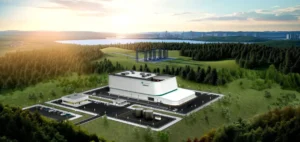NASA’s recent receipt of a significant quantity of plutonium-238, announced by the space agency, represents a major turning point in the history of space exploration. Plutonium-238, a rare and crucial isotope, is at the heart of the power generation systems on NASA’s space probes and rovers, particularly for missions where solar power is not viable.
Importance of plutonium-238 for space missions
This delivery of 0.5 kilograms of plutonium-238, the largest since the resumption of U.S. production over ten years ago, underlines the crucial importance of this isotope for space missions. Plutonium-238 is essential for NASA’s Radioisotope Power Systems (RPS), which convert the natural heat emitted by plutonium decay into electricity. Among these systems is the Multi-Mission Radioisotope Thermoelectric Generator (MMRTG), which has been used to power recent Mars rovers, including Perseverance.
Challenges and advances in plutonium-238 production
The need to restart plutonium-238 production is explained by the gradual reduction in stocks. The latter is a by-product of the manufacture of nuclear weapons. With the reduction in the need for new nuclear weapons, reserves of this isotope have dwindled. In 2010, the US Department of Energy submitted a report to Congress aiming to achieve an average production of 1.5 kilograms per year by 2015. However, this target will not be met until 2026. Despite this, small quantities of this fuel have been delivered in recent years, some of which were used for the Perseverance rover.
Future prospects for space exploration with plutonium-238
RTGs remain the only option for deep space missions, according to NASA. Two potential technologies for a more efficient use of plutonium-238, the Advanced Stirling Radioisotope Generator (ASRG) and the Improved MMRTG, have been abandoned due to technical, scheduling and cost issues. Nevertheless, NASA is exploring new avenues with its next-generation RTGs, which it claims will produce more than double the power of an MMRTG with significantly less power degradation over time.
This breakthrough represents a major step forward for NASA in the use of nuclear energy to help future missions explore space. The Department of Energy’s Oak Ridge National Laboratory delivered this large shipment of plutonium-238 to NASA’s Los Alamos National Laboratory. It should be noted that this plutonium is not identical to that used in nuclear weapons and would not be ideal as fuel for a reactor. Although half a kilogram may not seem like much, this is the largest quantity of plutonium-238 distributed in recent years.
This historic delivery of plutonium-238 to NASA marks an essential milestone in space exploration, underlining the importance of this rare isotope for future missions, particularly in extreme environments where alternatives such as solar power are impractical.






















